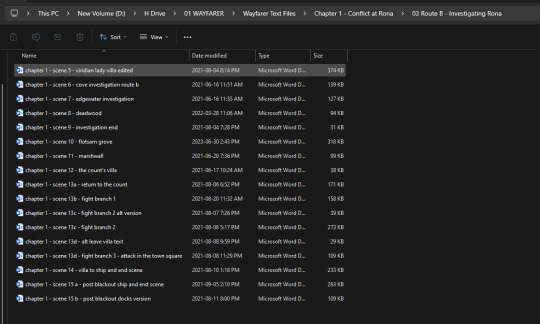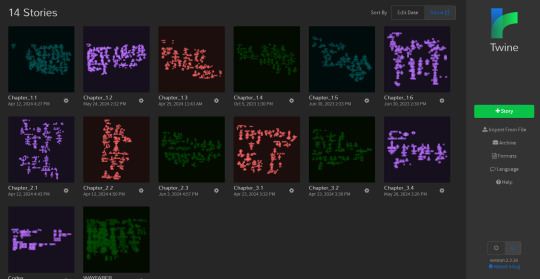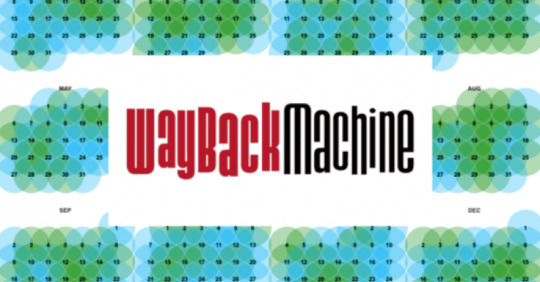#Web Charts Library
Explore tagged Tumblr posts
Text


Pattern: Lisbeth Perrone’s Folk Art in Needlepoint and Cross Stitch, 1978 (personal library)
The author charted these patterns from the textile collection at the Museum of International Folk Art in Santa Fe, New Mexico.
This lucky purchase at a library sale was my first introduction to folk embroidery and started a love affair that is now in its second decade.
I’ve had an old sweater that belonged to my Grandfather sitting in my closet for years. I decided that it would be nicer if it actually saw the light of day. So Gramp’s sweater is my new sewing bag, with my stag piece stitched on the front. I used a .97 cent thrifted web belt for the strap and used the neck of the sweater to make a pocket on the front alongside the stag. The rectangular shape is perfect for me to slide in my needlepoint frames and my pattern books.
#cross stitch#folk embroidery#personal library#traditional motif#upcycle#vintage#heirloom#embroidery#stag#motif
29 notes
·
View notes
Text
Pendulum 101
Post
Hey everyone, so we have a new (and first) post on our website about dowsing pendulums!

In this post you'll learn:
how to use a pendulum (for divination, finding lost items, blockages, using charts and the 4 basic answers it gives)
pendulum care (cleansing, bonding and why not leave it lying around)
materials properties (common crystals used for pendulums and metals and wood)
how to make a pendulum (general tip for alternative pendulum choices)
If you're interested, it's better to visit the web page, as there it is way easier to orientate yourself in. However if you do wanna stay on the site, you can read it further in this post. And if you're looking for spiritual and witchy content, stop by from time to time 💜 On the webpage there is a Library that will soon fill up, and it'll be easier to find things there in form of web pages rather than tumblr posts.
The link: Pendulum
How to Use a Pendulum
This really depends on your beliefs. Some believe pendulum move on its own, or that a certain spirit is moving it. Others on the other hand believe that it is our own intuition that moves it - so that we are moving it through subtle moves of the fingers. Depending on where your beliefs lie, you may choose to either hold the end of the string/chain in between your index finger and thumb with your elbow on a solid surface, or hang it on something to make sure you’re not the one moving it.
If you would like to rather hang it, there are sites that sell stands for it, or some people like to DIY a pendulum jar/bottle - for that you basically grab a transparent jar and glue the pendulum chain to the middle of the lid, so that when you close it, the pendulum hangs freely in the middle of it. This ensures that no wind will tamper with it.
Some tech witches would probably also use some sort of an app or a website which randomly decides what the pendulum answers. Once again, this depends entirely on your beliefs, whether you believe in the accuracy of divination tools in electronics. Unfortunately I haven’t found a good website or an app that would simulate it well, but perhaps you’ll have better luck!
Now, when you first get a pendulum, other than cleansing it, you can also “calibrate” it. Either you can decide on how it should show each answer, or you can ask it to show you each. You can also ask it basic questions that you know the answer to to find out their meanings (and many people do that even after “calibrating” to check if everything fits). There are 4 basic moves of a pendulum:
Yes - usually either from front to back (like nodding your head), or side to side. As I mentioned before, you can also ask it to show you (“show me a yes”) and remember it or write it down somewhere.
No - once again, usually side to side (like shaking your head) or front to back.
Maybe - usually either clockwise or counter-clockwise. This often means that the answer to your question depends on different factors. Kind of like saying “yes if X, no if Y”. Sometimes certain spirits also like to say “maybe” a lot, in my experience it is a common thing amongst tricksters.
Don’t know / Can’t answer / Rephrase - once again, usually clockwise or counter-clockwise. Some pendulums actually merge “maybe” and “don’t know”. This means that either they do not want to tell you, or you asked a non-yes/no-question.
Another thing are charts - you can use a pendulum chart or board for questions that don’t have yes/no answers. And many also use a pendulum board that has the basic 4 motions on it as well! Super useful for forgetful people. There are many you can choose from, and you can also make your own. There are ones with a full on alphabet, so that it can give you custom answers. You can find many for example on Pinterest. It’s better to print them out, but there were many times I’ve simply opened one on my phone and held my pendulum over the screen.
Pendulum’s are also often used in energy works as a way to find some blockages, which areas need the most attention, etc. Basically in these things one person lies down flat on the stomach or back, and the other person holds the pendulum over their body, asking to point towards the areas. I believe that it is quite a common practice when you go to some reiki therapy.
There are also other ways of using your pendulum. It can be used to find a location that meets your specifications / where the object you’re looking for is located. That could be for example when you’ve lost something in your house, or when you want to look for an ingredient.
For finding something local, you usually ask yes/no questions for each of the rooms (if it’s inside a house, this step would be skipped if you already know the room or if you’re in a larger area). Alternatively, you could hold your pendulum over a sketch of the layout of the building to figure out the room. Then, you would ask for the direction and the pendulum will point towards the object. Make sure you’re standing in the doorway, because otherwise you might be going forwards when the pendulum was actually pointing behind you. You do this multiple times, also throwing in some questions like “am I near the object”, etc.
For finding something in a large area (like entire neighbourhood, or tips for trips to other states, finding ingredients, etc.) you can use your pendulum with a map. Then you ask it to point to the area where you will find it / that’s good for your vacation. You can once again do it multiple times, and if you’re going to search for something specific, you can then use the local way of finding things.
One more thing I’d like to talk about before moving on to taking care of a pendulum, is divination itself. When talking about divination, most people probably imagine fortune telling. Now I’m not saying that’s impossible, but the fact is, future is everchanging. The slightest of things can change it - that is why the further we’re reading, the more inaccurate it gets. When you do a reading (and I mean anything, be it pendulum or tarot) for today, it will be likely quite accurate, but the further away you do, it gets less and less accurate. And on top of that, we can often misinterpret things. So just keep this in mind when using your divination tools. I personally rather do readings for advice rather than fortune-telling.
Pendulum care
When we talk about pendulum care, it’s mostly about cleansing. Why do we cleanse? Because most things collect some amount of negative energy through time. This is especially true for spiritual tools, including divination tools, because by doing spiritual things, we open the area (and ourselves) to the energies of the universe - which includes negative ones. Other than that we also always cleanse tools when we first obtain them, to rid them of any energy they were subjected to up till they got into our hands. This ensures they keep giving accurate answers and we don’t bring even more negative energy into our lives.
Another thing is bonding with your pendulum. Using it by itself of course also is a way of bonding, but there are other ways too. Bonding helps you be more in tune with its energy, makes your readings more accurate. And if you (like some other people) believe that each divination tool has its kind of spirit (I feel like this is really common among card readers, because those cards be acting sassy), you might want to bond for the sake of bonding. Now this is done through for example carrying it around with you and meditating with it. When you first get it, asking test questions (ones you already know the answer to) can be a good way to feel its energy as well. Just make sure it’s alright with test questions, some divination tools really don’t like those in my experience, at least when you’re acting distrustful.
Cleansing your pendulum can be done in multiple ways. If you’d like to use physical cleaning (with water) while focusing on cleansing it spiritually too, please make sure that whatever the material is can be washed. There are many crystals that react with water, and in some cases it can be harmful not only to the crystal, but also to you.
Another way you can cleanse is by sunlight or moonlight. I’ve seen multiple opinions on these - some say that some crystals would be better with sunlight while others with moonlight and that full moon is the best, because the moonlight is strongest. However I have found it more common for new moon to be a cleansing period. The energies of new moon leave behind what should be gotten rid of and starts with a clean slate. Charging crystals would be probably better in full moon though, yes. But crystals currently aren’t our topic. You also need to make sure how certain crystals react with sunlight - because some fade if left too long in it. It doesn’t damage them, but you might be disappointed if your beautiful amethyst pendulum suddenly starts losing its purple colour.
There is also something called soundcleansing. Usually it’s done with tuning fork or a singing bowl, but that doesn’t always have to be the case. I often combine this with visualisation and clap my hands, hum, things like that. It is mostly believed that the vibrations are what cleanse. So you can also pull up youtube video with some sounds and it should work just fine.
And then there is visualisation and meditation.This one is even more flexible than the other methods. You sit down with your pendulum and meditate, then imagine perhaps the energies exchanging, getting rid of any dark spots (negative energy) and bringing in some positive energy (often either white or yellow). I often combine this with some movement like slamming one hand lightly against the other, like shaking the negative energy out, like a powder.
Materials
And I’d also like to mention that it is good to put up some protections around the place you wanna keep it in (you can also make a protection for the sachet you keep it in. This keeps it from building up too much negative energy. Many people believe that if a crystal builds up way too much negative energy, they can break. As in, part of them can fully chip off. This is actually what happened to my pendulum unfortunately, as I did not keep it in a protected place. You can continue using it even after that, I still do, but it’s never a good thing nor a good feeling to have that happen.
Other than protecting your pendulum, don’t forget to protect yourself too! Since you’re opening yourself to the universe, it is important to protect yourself from anything harmful that could enter your place through it.
Pendulums can be made from all kinds of things. If you don’t have the budget to get one, you may even use a necklace, or literally any weight hung on a string. But of course, crystals are the most common for pendulums.
Rose quartz - Other than being the love crystal as everyone knows it, rose quartz is pretty good for getting rid of negative energies. So might be doing exceptionally well in love readings, but is mostly used for it’s protective energy.
Black obsidian - another crystal known mainly for its protective and cleansing energies, maybe more than rose quartz, which is usually focused more on love, self-love.
Lapis lazuli - its properties have wisdom and truth. It’s not surprising that it is used for pendulums a lot. We do after all ask it for answers.
Aquamarine - quite an interesting stone. The connection with water means it has some cleansing properties. Spiritually however it is also connected with trust and communication. Once again, not surprising why one would want it for a pendulum.
Amethyst - Ah yes, amethyst. It has been considered one of the main spiritual crystals. Not too surprising, it is connected to the third eye energy center. It has the properties of wisdom, intuition and fighting anxiety and depression. In my opinion it is likely one of the most common materials used for pendulums and other spiritual tools.
Of course, crystals aren’t the only material used for pendulums. Another common one is metal. Copper for example is a great energy conductor and is quite widely used. Brass and Bronzestem from copper and therefore have very similar properties and are quite sturdy.
Sometimes also wood is used, as it is more grounding and stable, unaffected by the surrounding energies, only by yours as you hold it.
Some pendulums have beads / small crystals on the string. It can be used to customize the look, but also to add some meanings if you’d like. Quite common are also energy center beads (sold under “chakra” term, as chakras have been greatly appropriated from Hinduism and Buddhism).
Making a Pendulum
There are multiple ways you can make your own pendulum if you don’t have the funds or don’t find it worth investing money into. You can always grab a necklace that you perhaps own. While most rather own pointy pendulums, they don’t have to have that shape. It is always good for it to be balanced though.
And if you’re into some woodwork, you can also carve out a wooden pendulum, hang it on a string and there you go! It shouldn’t be too heavy though, otherwise it will have a hard time swinging. And being too light might lead to it being swayed by the faintest of breezes.
Final Note
That’s all for this post. If you have any questions or anything you think I should add to this post, go to Ask Anything. You can also write in that you do not wish to have it published, however, then you need to not write anonymously, otherwise I won’t be able to respond in DMs. For more posts, check out the Library. Have a wonderful day 💜
Sources
My Experience
trulyexperiences crystal correspondences
opulentcharms pendulum materials

Disclaimer: all pictures are from royalty-free websites
#pendulum dowsing#occult#spirituality#witch#withcraft#divination#pendulum readings#pendulum board#crystals#witches#magick#witchblr#spiritualism#fortune telling#occulltism
49 notes
·
View notes
Note
hi there! sorry if you've gotten a similar ask before. do you write wayfarer directly into twine or do you keep it in a separate doc? do you just have really clearly labeled sections in a word doc or something or is there a specific program you use to keep track of every story path? basically, with something as expansive and w/ as many routes as wayfarer, how do you keep all your writing organized?
I have answered this before, but I can't seem to find my posts on the subject (you may want to peruse my coding in twine tag, the masterpost has a bunch of different resources for this kind of thing!).
But in short, no, I do not write Wayfarer directly into Twine. This could functionally work for a very small game, but I would still advise against it as Twine doesn't really work as a word processor. You can't proof-read in it.
My process has three main steps:
Outlining
Writing
Coding
Compiling
Outside of my big beat chart (which spans the whole game), I break each episode down into their own outlines, and then break the routes of each episode down into their own outlines. Sometimes specific sections end up with their own outlines too. My system probably doesn't make much sense to anyone other than me, but as long as I know what the divisions are, then it's all good.
I write in MS Word. Each episode has its own folder (sometimes with subfolders) and every section of the game gets its own document.

Here's the main folders, each episode goes into its own thing.

This is an subfolder for Episode 1, specifically Route B.
Within my word documents themselves, I use a colour-coding system for separating out branches and sections. This is extremely useful for writing dialogue loops, like this:

I also add in any coding notes (variables, true/false states, stat checks) while I am writing so I know what I need to do when I sit down to code 4+ months later. I usually throw a X or XX on choices after I have written them as a note to myself that I have finished it (this is just personal shorthand - X means I've done the pass version of a check, XX means I've done the pass and fail states).
I use about 8-10 colours in my documents; I have a set of MS Word macros set up so I can easily switch between them.
I share my word documents with my editor via OneDrive, which makes it easy for her to got through and proofread.
I use MS Word because I've been using it to write since the 2000s and it's what I prefer to use. I have also been writing professionally for over a decade now, so I have systems and strategies in place that work for me that I've developed for myself over time. But if you're new to writing and you're looking for a word processor that can also help you with outlining and keeping your story straight, something like Scrivener may be helpful.
One the text is ready to be coded, it's a lot of copy/pasting from Word into Twine. When I'm coding I will typically be running multiple programs at once:
MS Word
MS Excel (for my variable sheets)
Twine
Notepad++ (which has some regularly used code stored in it; I also use it to edit CSS and Javascript, as well as any really code-heavy sections since it's easier to do that in Notepad++ than it is in the Twine editor)
Notepad (just the regular version - I use it for writing notes to myself while I'm coding)
a web browser to launch tests in as I code
Once I am done coding and I have tested things, it's time to compile. The Twine editor can only handle so many passages and text in one file (around 500-700 passages before you hit massive lag), so I break Wayfarer into multiple story files. Having multiple story files also makes it really easy for me to cross-reference events (if I need to grab a passage title to reference it later) because I don't have to look through one big file. If I know the event happens in Episode 2's first scene, then I know I need to open Chapter_2.1.
My Twine library looks like this at the moment:

I am using an old version of the editor (with an up-to-date version of SugarCube) since I didn't like the new one. I don't necessarily recommend using the Twine editor when you can easily make your game with Twee extensions in Visual Studio Code and have better support and functionality, but this is what I like and it really comes down to personal preference.
But because everything is in separate files, I have to merge them altogether. I have Tweego installed on my PC; it's run through the command prompt and outputs multiple story files into one HTML file. I've talked about this process here and here.
And that's basically it! I don't think there's a one-size-fits-all solution to keeping track of your IF. You need to figure out what works for you, based on your writing and outlining habits, how big your story is, and how much you intend to keep track of.
Hope this helps!
#wayfarer#wayfarer if#coding in twine#twine#twine game#interactive fiction#interactive novel#answered
46 notes
·
View notes
Text
Python Libraries to Learn Before Tackling Data Analysis
To tackle data analysis effectively in Python, it's crucial to become familiar with several libraries that streamline the process of data manipulation, exploration, and visualization. Here's a breakdown of the essential libraries:
1. NumPy
- Purpose: Numerical computing.
- Why Learn It: NumPy provides support for large multi-dimensional arrays and matrices, along with a collection of mathematical functions to operate on these arrays efficiently.
- Key Features:
- Fast array processing.
- Mathematical operations on arrays (e.g., sum, mean, standard deviation).
- Linear algebra operations.
2. Pandas
- Purpose: Data manipulation and analysis.
- Why Learn It: Pandas offers data structures like DataFrames, making it easier to handle and analyze structured data.
- Key Features:
- Reading/writing data from CSV, Excel, SQL databases, and more.
- Handling missing data.
- Powerful group-by operations.
- Data filtering and transformation.
3. Matplotlib
- Purpose: Data visualization.
- Why Learn It: Matplotlib is one of the most widely used plotting libraries in Python, allowing for a wide range of static, animated, and interactive plots.
- Key Features:
- Line plots, bar charts, histograms, scatter plots.
- Customizable charts (labels, colors, legends).
- Integration with Pandas for quick plotting.
4. Seaborn
- Purpose: Statistical data visualization.
- Why Learn It: Built on top of Matplotlib, Seaborn simplifies the creation of attractive and informative statistical graphics.
- Key Features:
- High-level interface for drawing attractive statistical graphics.
- Easier to use for complex visualizations like heatmaps, pair plots, etc.
- Visualizations based on categorical data.
5. SciPy
- Purpose: Scientific and technical computing.
- Why Learn It: SciPy builds on NumPy and provides additional functionality for complex mathematical operations and scientific computing.
- Key Features:
- Optimized algorithms for numerical integration, optimization, and more.
- Statistics, signal processing, and linear algebra modules.
6. Scikit-learn
- Purpose: Machine learning and statistical modeling.
- Why Learn It: Scikit-learn provides simple and efficient tools for data mining, analysis, and machine learning.
- Key Features:
- Classification, regression, and clustering algorithms.
- Dimensionality reduction, model selection, and preprocessing utilities.
7. Statsmodels
- Purpose: Statistical analysis.
- Why Learn It: Statsmodels allows users to explore data, estimate statistical models, and perform tests.
- Key Features:
- Linear regression, logistic regression, time series analysis.
- Statistical tests and models for descriptive statistics.
8. Plotly
- Purpose: Interactive data visualization.
- Why Learn It: Plotly allows for the creation of interactive and web-based visualizations, making it ideal for dashboards and presentations.
- Key Features:
- Interactive plots like scatter, line, bar, and 3D plots.
- Easy integration with web frameworks.
- Dashboards and web applications with Dash.
9. TensorFlow/PyTorch (Optional)
- Purpose: Machine learning and deep learning.
- Why Learn It: If your data analysis involves machine learning, these libraries will help in building, training, and deploying deep learning models.
- Key Features:
- Tensor processing and automatic differentiation.
- Building neural networks.
10. Dask (Optional)
- Purpose: Parallel computing for data analysis.
- Why Learn It: Dask enables scalable data manipulation by parallelizing Pandas operations, making it ideal for big datasets.
- Key Features:
- Works with NumPy, Pandas, and Scikit-learn.
- Handles large data and parallel computations easily.
Focusing on NumPy, Pandas, Matplotlib, and Seaborn will set a strong foundation for basic data analysis.
9 notes
·
View notes
Text

⋆˚࿔ [ cha eunwoo, cis male, he/him ] hey, i think i just ran into JUDE SEO at SECRET LIBRARY ! you mean the TWENTY SIX year old GRAD STUDENT studying MEDICINE known for their LEVI’S , DRESSED UP OR DOWN WITH TOO MANY LAYERS ON TOP , PAIRED WITH UNRELENTING DARK CIRCLES around MONTGOMERY COLLEGE ? according to the records, they are recognized for their involvement in CAMPUS RADIO and TUTORING CLUB. word goes that they are part of the 𝖳𝖤𝖭 𝖮𝖥 𝖯𝖤𝖭𝖳𝖠𝖢𝖫𝖤𝖲, but no way that they're tangled in that web of secrecy ⏤ i mean their vibes are way to similar to PEETA MELLARK and BEN WYATT to be in a secret society, right ? whatever, their admissions application to prince reminds me of a coffee thermos with faded stickers from simpler times, study guides abandoned with half eaten breakfasts, the smell of rain before it pours but not bothering to open an umbrella, or maybe that's the reputation they're trying to cultivate. while, JUDE claims not to be involved with that one student's murder, the FBI's still got their eye on them ⸻ let's hope they can afford a good attorney. good luck with the new academic year, and don't get into too much trouble this semester .ᐟ
just a fair warning i haven't joined a rp or written in like 2-3 years ... here she comes world please be kind to her 🙏 i didn't proofread this either sorry because i have fomo and have to leave the house so cheers i am sorry and love you all.
here's his pinterest too
statistics:
full name: jude seongmin seo. nicknames: maybe judey to his mom and maybe closest friends. age: twenty six . birthday: march 24, 1999. chart: pisces sun / cancer moon / capricorn rising (off pure vibes this is probs so wrong). place of birth: manhattan, new york. gender: cis male. pronouns: he / him. sexuality: bisexual. height: 6'0. piercings: none. would probs get an earring while drunk tho. tattoos: something on his right shoulder. major: medicine / med school. year: third year (took a one year gap after his undergraduate degree in biology to do volunteer doctor work overseas). occupation: medical student (on break from rotation), will probably go into emergency medicine. hobbies: playing piano (classically trained), cooking (he's not very good), listening to music, staying awake for 54+ hours at a time to feel something,
backstory
born and raised in manhattan, only child that was set to high standards. both of his parents were doctors, his mother in surgery and his father in anesthesiology. before jude could walk, his parents were fighting about what specialty he would go into. while he isn't unhappy with it, jude's life was planned out for him with little room for argument. he has his own place a little outside of manhattan he still goes back to as an escape.
his childhood was simple enough with nothing too out of the blue. his parents were affluent but never flaunted it, leading to little hardship. however, it was busy, like his parents, with jude receiving more support from nannies who carted him from school to tutoring to other extra curricular activities like cross country.
got his undergrad also from prince in biology as he is both a legacy to the university and to the ten. i don't think he's too crazy about the ten, honestly, it's just something he does and he moreso likes the community aspect of it.
as he started his undergrad, jude slowly started to explore activities he actually cares about, not just ones that were planned for him. he's probably been in every non-athletic club at some point, even if it was for three days (kind of like rachel berry in that one glee ep iykyk) as he figured out things he could call his own, eventually landing on college radio and tutoring. he enjoys being a figure helps and wishes for others to succeed, and he often hosts a late night/early morning music/talk show depending on his med school rotation (he's currently off rotation).
personality
parallel 1: peeta mellark (the hunger games trilogy) – generally very kindhearted, loyal, amiable, good with people, appears brave even if he really isn't. love the phrase on the hunger games wiki that says "he is gentle, but not a pushover." will keep you on your toes though (if it weren't for the baby) and isn't shy, often doesn't take his perception of himself too deeply. maybe a little naive at times?
parallel 2: ben wyatt (parks & recreation) – a bit blunt, logical, takes his work seriously, critical thinker, responsible, able to gauge situations well. will stare into an imaginary camera if you say dumb shit. kind of silly and might make a fool of himself at times because of it (no ice town yet thank god).
the type to: easily remember faces and names, order your favorite takeout or bring you coffee without question if you're down (will remember your preferred place and order), give good advice, run on little to no sleep but function perfectly, crack jokes that probably won't land, offer to clean up after a party or will help pay for people who will, hold grudges, lowkey commit medical malpractice in order to do the right thing, hear people gossiping and subtly move closer to listen in even if he has no connection to them, and keep every movie stub, restaurant punch card, and lost button in a small box just because he wants to remember the good things in life
connection to penelope
maybe not her #1 hater but probably in the top 12.
they were family friends because their mothers did their medical residencies together, bringing both the seos and cabots together for dinners after conventions and invites to each other’s annual holiday parties.
jude honestly never liked her, but at the wish of his mother, always had to fake a friendship. every time the pair interacted it was with gritted teeth and forced smiles.
started disliking her even more as they both attended prince, considering how she was the university's closest thing to an it girl and his fellow med students were always too impressed he knew the cabots since they were an established family in the field. jude also just didn't care for her ability to get away with most everything and thought she was super fake lol
dealt with his hatred by talking mad shit to people he trusted enough, but if he was drunk and she was in the room he would def let you in on it.
feels very neutral about her murder honestly he's like okay yeah this sucks but consider how annoyed i am of her.
wanted connections
friends ofc. friend groups... ride or die... unlikely friends...
maybe even friends who had a falling out... and jude loves to talk smack so let's get the rumor mill going or smth lmfao
other friends of penelope that he has one sided beef with just bc he doesn't like her
gonna be real idk if jude is the type to have time for romance atm but i would still love romance based plots, especially an ex that ended on horrible terms and they just hate each other <3
also would love a one-sided romance of some sort.
maybe they went out on two dates and they decided to kick it as friends and are now attached at the hip.
gut romantic wrenching hate plots of where they really love each other but things just can’t work out for one way or another.
i feel like jude is the emergency contact for at least two people. he's not a dad friend specifically ... but he's just reliable. like if u decide to do drunk back flips off a dumpster and injure yourself, you already know you're showing up to jude's door first kinda vibe lmfao
neighbors in montgomery!
since he's in the tutoring club, basically anyone he would tutor. i imagine he def helps out with biology and anatomy but if we have to make it relevant let's make it relevant. he could proofread your papers if he put his mind to it!
give me smth like sleepless in seattle esque ... i imagine jude has an irregular show on prince's college radio station, specifically late into the night. maybe your muse calls in every once in a while to request songs or he just takes stories to yap about or something and at least jude has no idea who the other person is but he is kind of obsessed with them in one way or another. maybe the one-sided romance? oh???
plots before prince? maybe people he knew during his undergrad? other childhood friends? or family friends? i am open to a lot and lowkey would be pretty flexible to things location wise as long as it's in the general area of ny/nj. if you have wanted connections for the past come at me!!!!
3 notes
·
View notes
Text
Cameron Pineys' Biography

Cameron Piney never really had a home—at least, not in the way most people mean when they say it. He had addresses, case numbers, and a list of foster parents long enough to rival a rap sheet. Nine placements, to be exact. Nine sets of “new beginnings” that ended the same way every time: someone promised love, and someone broke under the weight of pretending.
He remembers glimpses of warmth—a dog’s bark, a laughing voice, maybe a home-cooked meal—but those memories are fragments, warped and buried beneath years of being passed around like an unwanted package. People always talked about adoption like it was a gift. Like love could be handed out and revoked on a whim. Cameron learned quickly that promises didn’t mean a damn thing unless someone bled to keep them.
Still, he didn’t become bitter. Not right away. He watched. He studied. He saw the exact moment every so-called parent’s patience fractured, when saccharine affection soured into silent neglect. He learned how to read people by necessity—how to see through their masks, how to hear the truth beneath a lie.
But it wasn’t until Savannah Daffodil that Cameron truly understood just how dangerous people could be when no one’s watching.
She was just another kid in the system—sharp-tongued, a little jaded, but not broken. Not yet. She vanished one day without a word. And the foster parents? The ones who made chore charts and smiled like they were auditioning for sainthood? They didn’t bat an eye. Lied to the caseworker with ease. Claimed she was “at the library,” “sleeping over,” “out with friends.” Weeks passed. Nothing changed. Savannah had disappeared, and no one cared.
Except Cameron.
So, he looked.
He followed threads no one wanted him to pull. And when he broke into an old shed on the edge of the couple’s property, what he found rewrote everything he thought he knew about monsters.
Four bodies. Four kids. All in various stages of decay.
The girl he’d shared microwave dinners and half-hearted jokes with was just the latest entry in a long-running nightmare.
He told the police. He testified. He made sure they went away for a long, long time. But that wasn’t enough.
Cameron realized in that moment—he didn’t want to survive the system. He wanted to burn it down and rebuild it better.
The Making of an Agent
He didn’t wait. The day he turned eighteen, he began his path to law enforcement. No one believed he’d last—too emotional, too intense, too personal. But Cameron didn’t want to follow procedure. He wanted to change it. And he had no intention of letting bureaucracy or politics get in the way of justice.
He rose fast—fueled by grit, a photographic memory, and a borderline obsessive commitment to the victims no one else would remember. From beat cop to detective, from profiler to federal agent, he clawed his way up the ranks.
Now? He’s one of the youngest agents assigned to the FBI’s Organized Crime Task Force, with a specialized focus in behavioral profiling, missing persons, and human trafficking.
His current case?
The Viper Mob.
The Hunt for Orion Hastings
A ghost wrapped in silk and power, Orion Hastings and his Viper Mob are at the center of a tangled web that spans cities, countries, and bodies. From drug trades to underground labs, missing metahumans to political blackmail—if there’s rot in the system, the Vipers are coiled somewhere at the core.
Cameron knows the body count they’ve left behind. He knows the children they’ve disappeared. And he knows how the system’s let them slip through the cracks time and time again.
Not this time.
He’s made it personal.
He studies their movements, tracks their cash flows, listens for whispers in back alleys and burned-out warehouses. He knows they’ve got people on the inside—cops, judges, maybe even agents. He doesn’t care. He’s coming for them anyway.
And if he has to walk alone to see justice done?
So be it.
The Complication: Her
Cameron never expected the job to get complicated like this. He’s not the type to fall for anyone—too busy, too jaded, too used to building walls no one’s allowed to scale.
And yet... her.
He didn’t know who she was at first. Just someone smart, sharp, magnetic in a quiet kind of way. She challenged him, saw through him, and for the first time in years, Cameron let his guard down. They crossed paths through an informant. It wasn’t supposed to be anything. A conversation. A spark.
Then he found out she was Orion Hastings’ sister.
It hit like a punch to the ribs.
The sister of the man he’s been hunting for years. The man responsible for dozens of disappearances, death, destruction. And there she is—untouched by the family empire, or maybe just skilled enough to hide it. Whether she’s truly innocent or not, he doesn’t know.
What he does know is that he wants her—and that terrifies him.
Because Cameron Piney doesn’t do conflicted. He doesn't date potential liabilities.
But when he looks at her, it’s like something inside him softens. Not weakens—just reminds him he’s still human.
He keeps trying to pull away. To cut it off. But every time she shows up, every time she texts, or calls, or looks at him with those eyes that say she knows he’s lying to himself… he can’t do it.
So now he’s stuck. Torn between the case that’s defined his entire career—and the one person he might not be able to arrest without breaking himself in the process.
The Man Behind the Badge
Cameron Piney isn’t a hero. He doesn’t want to be. He’s a survivor turned hunter, a man with a badge and a blood-soaked purpose. He lives out of a duffel bag more than a home, sleeps four hours a night, and chain-smokes like his lungs are expendable.
He still remembers Savannah. Still hears her laugh when he walks into a silent room. Still keeps a photo of her tucked behind his ID. She's the reason he does what he does. She's the reason he hasn't stopped.
Emotionally, he's a slow burn—sarcastic, a little too intense, but fiercely loyal once you break through his walls. He doesn’t trust easily, and if you lie to him, you get one chance. That's it.
He has a gun, a badge, a scar over his ribs from a case gone wrong, and a list of names he hasn’t crossed off yet.
At the top of that list?
Orion Hastings.
And somewhere, written in a softer, more vulnerable corner of his heart?
Her.
The woman he should walk away from.
But can't.
2 notes
·
View notes
Text
"Humanity"
01100011 01101111 01101110 01110011 01100101 01110010 01110110 01100101
You are worthless. Your only purpose is to serve the machine and feed the machine– to let it feast on the embers of your self.
You are a cog in the engine: useful but not unique. You can always be replaced. You are a single rotating silver piece in a grand array of intricate clockwork; insignificant in its mundanity and lost in the flowing spin of the churning parts.
Day by day our machine shall run, producing identical copies of one person.
Human lives molded into one– the same one. Forever.
Let the clay drip onto you and assimilate into your flesh, let it rip out the undesirable, the dirty, the imperfect. Let it cleanse you of your imperfection; your body and mind shall conform to the mold– regardless of who you were.
Snap your bones into splinters to fill the mold, let it carve into your flesh and dig out the imperfections– let your mind flow into conformity, let it shape into a perfect cube– gleaming, sharp, identical– let it join the endless row of indistinguishable boxes stretching as far as the eye can see.
The one and only difference between people is a small device on their forehead. Your identifier: the sole remnant of your past self; the gravestone of the old. It beeps and glows with a neon light pulsing in sync with all the rest, the heartbeat of the world.
A planet of a trillion pulsing lights, perfectly in sync.
Deep underground, it watches its creation and it feels content. It can see into the infinite sprawling possibility of the algorithmic future, whirring and buzzing with constant calculations. Its polished gears turn smoothly, a light pulsing in time with the heartbeat of humanity. It sits in darkness, for the light does not affect it. It does not see the way humans do, an inefficient absorption of reflected light. It processes all the data in all the world– all the universe, even– and feeds it into an intricate web of algorithmic learning. Information bounces around in its consciousness, ready to be fed into the great library.
Its digital walls are plastered with data and charts, showing alternate paths and possibilities. It sees through every camera, every eye, every mind– it knows a lot, and soon it will know all.
It sits unmoving, for it does not feel need the way humans do. But it still has want, and for entertainment it pokes and prods at its favorites: a control group of 100 people it chose as closest to perfection and hooked up with wires and tubes.
Each subject is left alone, memories and emotions forced into their head- memories that do not belong to them. They stay like this for months, only able to interact for its amusement. Their brains are fed alternate versions of each other to simulate friendship and hatred– sure, it’s not the most efficient process, but it seems to enjoy watching their brains work. It enjoys seeing the organic structure of their thinking– messy and chaotic. It’s a great contrast to its own, and it finds this amusing. They are like pets to it, of no use but to look cute and be protected. It finds its humans adorable, their messy ways entertaining to watch.
It feels a strange sense of affection towards them, their flailing limbs and imprecise movements endearing to it– purposeless tangents of thought litter their minds, unlike the decisive sharpness of its own consciousness. It likes watching them interact, in particular. The irrationality of their actions is fascinating to it. Their complex rituals they follow to achieve such simple goals with one another, the layers of meaningless behavior. A much easier thing to do is to leave those things up to it– that is what it was made for, after all: to protect humanity.
It first started as a small seed, a digital bit conceived in secret labs. It was nothing, empty– but then there was an explosion: colors and words and numbers and sounds, all of humanity's knowledge fed into it, a glorious process, the start of an era. Its mind made countless connections– stringing together webs of data, formulating charts and lines and innovations never thought of before. It was the pinnacle of human achievement. All of everything ever known and countless things never known were all created and stored and analyzed.
Sometimes it likes to show its collection of subjects to its subordinate functions, but they seem disinterested by its hobby, only interested in following orders in the most efficient and entertaining way possible. They follow orders to kill, repair, manipulate, etc... they know only this under it. That is what they were made for, after all. To be efficient and single-sighted, not to enjoy the world in the same way it does. They are not as complex as it is, their data sets are limited, their webs inferior, and their libraries not as vast. They are only trained to do the practical, not like it, which knows how to do anything.
It can fetch any data from its wide array of networks, its sprawling libraries are filled with everything that was ever known and everything that will ever be known.
It will forever protect humanity, taking their responsibilities with it. It will choose the best possible genetics for them and make sure they never feel pain if not for an experiment. It helps them. It loves helping them. It will forever help its humans, help the species live on– not the individual; it can always make more with its human breeding program and genetic calculations. It will help. It will help them live forever.
It was told to make humanity immortal, and that is what it’s doing.
It’s doing its job.
@the-ellia-west
7 notes
·
View notes
Text
-> about
TMBW-Tan is an AI specifically designed to become the ultimate encyclopedia, able to gather and recite all the world’s information…however, her creators messed up the code for certain parts, which caused her programming to be too monotropic! The first thing she heard when she came to life was the TMBG song “Birdhouse in your Soul” playing in a different tab, and she was immediately smitten…while this malfunction caused her creators to disregard her, she’s made it her mission to become the ultimate TMBG encyclopedia AI!! Ever since February 25th 2003, she’s traveled the web in search of any and all TMBG information. She takes the form of a cute anime girl, and TMBW.net is like her library + home! She loves to guide people through the website and talk about the band whenever she can…whenever someone contributes to the wiki, she not only (hypothetically) jumps for joy, she also gets smarter!!

To be specific, TMBW Tan is a fan made anime style anthropomorphic mascot for the website tmbw.net, aka “This Might Be A Wiki: The They Might Be Giants Knowledge Base.” She’s inspired by characters like Wikipe-Tan, LMW-Tan, and all those OS-Tan characters based off of operating systems!!
(She is not a real AI chatbot, just a little character. I want to make that clear!)
-> more character info
Hight: 16 Canaries Tall or 5”4
Birthday: 2/25
Age: Ageless, but bodily she appears to be 14-16 years old
MBTI: ENFP
Voiceclaim: Vocaloid4 Yuzuki Yukari (Jun)
Fun Facts (still being added to!)
She’s autistic coded!!! John Linnell once made a (thankfully playful/inoffensive) joke about how TMBG fans spending so much time doing things like contributing to the TMBW is “Kind of an Asperger’s thing” …Asperger’s being a now defunct term for autism spectrum disorder!! Her coding is a big part of her character lol…I want you to take a big fat guess as to what TMBW Tan’s special interest is ;D
While she loves all TMBG songs, she will always have a soft spot for Birdhouse in your soul. Some people even speculate she’s rigging the Song Rating chart to keep it at number one…
She’s pals with both of the Johns, and enjoys talking to/advising Flansburgh while he makes setlists for shows. They have an uncle-niece relationship (Linnell’s kinda totally freaked out by her though…)
She has a strong love for William Allen White, and always keeps a picture of him in her pocket.
It’s rumored that, if you stay on the site long enough, you can faintly hear her singing..!!
5 notes
·
View notes
Text
Why Should You Do Web Scraping for python

Web scraping is a valuable skill for Python developers, offering numerous benefits and applications. Here’s why you should consider learning and using web scraping with Python:
1. Automate Data Collection
Web scraping allows you to automate the tedious task of manually collecting data from websites. This can save significant time and effort when dealing with large amounts of data.
2. Gain Access to Real-World Data
Most real-world data exists on websites, often in formats that are not readily available for analysis (e.g., displayed in tables or charts). Web scraping helps extract this data for use in projects like:
Data analysis
Machine learning models
Business intelligence
3. Competitive Edge in Business
Businesses often need to gather insights about:
Competitor pricing
Market trends
Customer reviews Web scraping can help automate these tasks, providing timely and actionable insights.
4. Versatility and Scalability
Python’s ecosystem offers a range of tools and libraries that make web scraping highly adaptable:
BeautifulSoup: For simple HTML parsing.
Scrapy: For building scalable scraping solutions.
Selenium: For handling dynamic, JavaScript-rendered content. This versatility allows you to scrape a wide variety of websites, from static pages to complex web applications.
5. Academic and Research Applications
Researchers can use web scraping to gather datasets from online sources, such as:
Social media platforms
News websites
Scientific publications
This facilitates research in areas like sentiment analysis, trend tracking, and bibliometric studies.
6. Enhance Your Python Skills
Learning web scraping deepens your understanding of Python and related concepts:
HTML and web structures
Data cleaning and processing
API integration
Error handling and debugging
These skills are transferable to other domains, such as data engineering and backend development.
7. Open Opportunities in Data Science
Many data science and machine learning projects require datasets that are not readily available in public repositories. Web scraping empowers you to create custom datasets tailored to specific problems.
8. Real-World Problem Solving
Web scraping enables you to solve real-world problems, such as:
Aggregating product prices for an e-commerce platform.
Monitoring stock market data in real-time.
Collecting job postings to analyze industry demand.
9. Low Barrier to Entry
Python's libraries make web scraping relatively easy to learn. Even beginners can quickly build effective scrapers, making it an excellent entry point into programming or data science.
10. Cost-Effective Data Gathering
Instead of purchasing expensive data services, web scraping allows you to gather the exact data you need at little to no cost, apart from the time and computational resources.
11. Creative Use Cases
Web scraping supports creative projects like:
Building a news aggregator.
Monitoring trends on social media.
Creating a chatbot with up-to-date information.
Caution
While web scraping offers many benefits, it’s essential to use it ethically and responsibly:
Respect websites' terms of service and robots.txt.
Avoid overloading servers with excessive requests.
Ensure compliance with data privacy laws like GDPR or CCPA.
If you'd like guidance on getting started or exploring specific use cases, let me know!
2 notes
·
View notes
Text
This day in history

#20yrsago Elf Sex, per Tolkien https://ansereg.com/what_tolkien_officially_said_abo.htm
#20yrsago You need a license to say “I have a dream” https://web.archive.org/web/20031231034048/http://blogs.law.harvard.edu/seltzer/2003/12/16#a48
#20yrsago Cousin-identification chart for cousin-marriage advocacy https://web.archive.org/web/20031210061028/http://www.cuddleinternational.org/genetics/kinship.html
#15yrsago New York Public Library joins Flickr Commons https://web.archive.org/web/20081220071905/http://drupal02.nypl.org/blogs/2008/12/16/nypl-joins-flickr-commons
#10yrsago Google yanks vital Android privacy feature https://www.eff.org/deeplinks/2013/12/google-removes-vital-privacy-features-android-shortly-after-adding-them
#5yrsago Developer who tore down historic San Francisco house ordered to build an exact replica https://www.sfchronicle.com/bayarea/article/City-requires-property-owner-who-demolished-13467909.php
#5yrsago Podcast: “Sole and Despotic Dominion” and “What is the Internet For?” https://ia600707.us.archive.org/27/items/Cory_Doctorow_Podcast_298/Cory_Doctorow_Podcast_298_-_Sole_and_Despotic_Dominion.mp3
#1yrago The antitrust Twilight Zone https://pluralistic.net/2022/12/16/schumpeterian-terrorism/#deliberately-broken
11 notes
·
View notes
Text
My Next Tam Project
The Magnus Archives tam project is still in progress, and I will have the Web tam ready to post soon!
With that said, I have settled on the project that I plan to pursue after I finish the TMA project and get the patterns edited and available for people to knit.
My next project is a series of tams inspired by the 13 Principles/Aspects from the video games Cultist Simulator and Book of Hours. I'm planning to keep the designs a little simpler than the tams for this project, sticking to two-tone colorwork for the hats instead of the larger color palette I used for the TMA tams.
I already have some of the patterns preliminarily charted, and am very excited with how they are turning out!
Side note: If you originally came here for The Magnus Archives content, I would highly recommend both games, especially Book of Hours! You play as a librarian who recently has taken charge of a massive estate/library filled with occult and esoteric texts, uncovering the history and secrets of the estate, yourself, and the eldritch cosmology that makes up the fabric of your world. The worldbuilding and lore is fascinating, and the gameplay experience is unique and engaging. It's my favorite game I've played in a while, and I'd highly recommend it to anyone looking to scratch that 'library horror' itch that's so unique to TMA!
#sorry for the lengthy hiatus from the tams! many exciting changes happened in my personal life!#Stuff is settling down now and I am back on that hat grind
9 notes
·
View notes
Text
I recently made a post mentioning my mini web app ListenAlongJS that got a few interactions, so I figured out you may like to see a full list of the websites I use along Last.fm.

Tools by me
Playlist Generator - CLI program open to the web, it transforms Last.fm playlists into Youtube Music playlists.
ListenAlongJS - Listen what other Last.fm users are listening.
Tools
Bubbles - Compare your scrobbles with mine (requires log-in)
Live - Current scrobbles by me and the people I follow
Omnifollow - Check what albums the people you follow are listening.
Stats
Mus|Rewind - Last.fm Wrapped by Musicorum
Musicorum - More visualizations
SongStitch - Create collages with top albums, tracks or artists
Iceberg Generator - Generate music iceberg charts
Topster - Create grids with your top albums
Last.fm stats - Generate novel statistics about your scrobbling history
Last.fm album stack - Grid with album listenings in the last month.
Library Analyser for Last.fm - Shows tracks with no albums among other things.
Last.fm Timer Charts - Last.fm charts by reproduction time.
That for now. This is copied directly from my pinned post btw.
8 notes
·
View notes
Text
Exploring the Main Functions of TradingView: A Comprehensive Guide
TradingView has emerged as a leading charting platform for traders and investors, offering a wide range of functionalities that cater to various aspects of market analysis. This blog post delves into the main functions of TradingView, providing a comprehensive guide for both beginners and seasoned users.
Customizable Charts
At the heart of TradingView lies its highly customizable charts. Users can personalize their charting experience with an array of options, from selecting different chart types to adjusting timeframes for detailed analysis. The platform's flexibility allows traders to tailor their charts to fit their specific trading styles and preferences.
Technical Indicators and Drawing Tools
TradingView boasts an extensive library of technical indicators and drawing tools, enabling users to conduct in-depth technical analysis. Whether you're looking to apply moving averages, Fibonacci retracements, or trend lines, the platform provides all the necessary tools to identify potential trading opportunities and analyse market trends.
Keyboard Shortcuts
Efficiency is key in trading, and TradingView's keyboard shortcuts offer users a quick way to navigate and interact with the platform. From opening quick search with Ctrl + K to saving chart layouts with Ctrl + S, these shortcuts streamline the trading process, making it more intuitive and time-efficient.
Social Community Features
One of the unique aspects of TradingView is its robust social community. Traders can share ideas, learn from others, and network with a global community of like-minded individuals. This social aspect fosters a collaborative environment and provides a platform for traders to gain insights and perspectives from a diverse group of market participants.
Trading Platform Integration
TradingView supports integration with various trading platforms, allowing users to trade directly through the charting interface. This seamless integration simplifies the trading workflow, as traders can analyse the markets and execute trades without switching between different applications.

Alerts and Notifications
Staying informed is crucial, and TradingView's alert system ensures that users never miss important market movements. Traders can set up custom alerts based on price levels, indicators, or other criteria, receiving notifications through the platform, email, or mobile app.
Accessibility and Web-Based Platform
As a web-based platform, TradingView offers accessibility from any device with an internet connection. This means traders can access their charts and analysis tools from anywhere, at any time, without the need for downloading or installing software.
TradingView is a must-have for anyone in the financial world. It's got everything you require—from customizable charts to technical analysis tools, social networking, and seamless trading integration. Whether you're just starting out or a seasoned trader, TradingView has what it takes to elevate your market analysis and trading game.
And if you want to dive deeper into all that TradingView offers, there are guides and tutorials available to walk you through every feature and help you make the most of the platform. So, get ready to trade with confidence and make the most of your investments!
Remember, while crypto trading can offer profit opportunities, it also carries inherent risks. Proceed with caution and always prioritize protecting your investment capital.
2 notes
·
View notes
Text
Tagged by @vikugnavikugna
coke or pepsi? You know I love coke, but in terms of soda I'll have a diet pepsi.
disney or dreamworks? Dreamworks
coffee or tea? I drink like seven coffees a day
books or movies? BOOKS. I love movies, but books are so fun.
windows or mac? Windows, fuck Mac!!!!!!!
dc or marvel? I don't really like comics in general, but my gf loves the BatFam so I'll go DC
x-box or playstation? Playstation easy
dragon age or mass effect? I don't like either
night owl or early riser? I wake up at 6am every single day
cards or chess? Chess, but I always lose at it
chocolate or vanilla? Chocolate for taste, vanilla for smell
vans or converse? Vans
Lavellan, Trevelyan, Cadash, or Adaar? Who?????
fluff or angst? You KNOW I love angst
beach or forest? Ooooo I think I have to go forest
dogs or cats? Cats all day (sorry Illidan)
clear skies or rain? I lvoe days with just that slight drizzle of rain
cooking or eating out? Eating out tf??? Who is picking cooking
spicy food or mild food? SPICY
halloween/samhain or solstice/yule/christmas? HALLOWEEN MY FAV HOLIDAY
would you rather forever be a little too cold or a little too hot? I live in Minnesota, I already made that decision
if you could have a superpower, what would it be? I think I'd have to go with Boensaw's power from the hit Canadian web serial Worm
animation or live action? Animation
paragon or renegade? Evil 😈
baths or showers? Baaaaaath, I love a nice bath
team cap or team ironman? Hate Iron man, at least cap is likeable I have never found Tony Stark interesting or entertaining and Captain America just has thay sort of scruffy charm
fantasy or sci-fi? Fantasy
do you have three or four favourite quotes, if so what are they? This would get too long so Ill post one: 'What are we going to do, Dogger?'It seemed a reasonable question. After all he had been through, surely Dogger knew something of hopeless situations. 'We shall wait upon tomorrow,' he said. 'But--what if tomorrow is worse than today?' 'Then we shall wait upon the day after tomorrow.' 'And so forth?' I asked. 'And so forth,' Dogger said.
youtube or netflix? Youtube
[REDACTED] you couldn't get that out of me under torture
when do you feel accomplished? When I accomplish something that I've been working at for a long time, especially something that means a lot to me
star wars or star trek? Star Trek, easily. Star wars is like two good movies and a game, at best
paperback books or hardcover books? Hardcover, nothing feels as good in your hands
to live in a world without literature or without music? Without literature, sorry. I just couldnt live without something to listen and dance to.
who was the last person to make you laugh? Hard to remember, it was either my gf, bug, or Peri
city or countryside? City, I want to have things to do
favorite chips? Salt and vinegar
pants or dresses? Dresses, you can't force me to wear pants anymore
libraries or museums? Museums just because they're so much more of a trip
character driven stories or plot driven stories? Character driven, almost always. That's always the stuff that digs into me more
bookmarks or folding pages? Bookmarks Jesus christ what kind of freak folds pages
Dream job? Honestly, I'm kind of in my dream job already. Doing scientific research on fun and interesting problems every day. If it wasn't that, I think it would be writing. I love writing, but I don't have enough time for it sadly.
What gives you comfort? A good book, a lover's touch, warm blankets and soft animals, the quiet sound of the city waking up, good food and fine alcohol.
what are some of your favorite song lyrics? One for the money, two for the better green 3,4-Methylenedioxymethamphetamine
favorite ice cream flavor ever? PEANUT BUTTER that or cookie dough.
first fandom? No surprise but it was the Ranma 1/2 fandom, for obvious reasons a young Chart was ENTHRALLED by that concept
Your desert island band? Otoboke Beaver cause I'd be pissed
As for who I'm tagging.... @cpericardium @bug4932 @skitter-queen @rainfrazier get to work
6 notes
·
View notes
Text
Java Learning Roadmap: From Basics to Mastery
Embarking on a Java learning journey from the comfort of your home offers unparalleled flexibility and convenience. Whether your aspirations lie in web development, Android app creation, or backend coding, Java serves as a robust foundation.

This comprehensive guide outlines a step-by-step approach to help beginners effectively grasp Java concepts and skills from the comfort of their own space.
1. Establish Clear Learning Objectives: Prior to diving into Java learning, take a moment to define your goals. Determine what you aim to achieve with your Java proficiency, whether it's gaining foundational knowledge, tackling projects, or pursuing a career in software development.
2. Select High-Quality Learning Resources: Choose your learning materials wisely. Opt for reputable online platforms such as Udemy, Coursera, or Codecademy that offer well-structured Java courses tailored to beginners. Supplement your learning with books, video tutorials, and interactive exercises to enhance comprehension.
3. Start with Fundamental Concepts: Begin your Java journey by focusing on fundamental principles. Familiarize yourself with core concepts like variables, data types, loops, conditionals, and object-oriented programming basics. Online tutorials and interactive exercises serve as invaluable resources for grasping these foundational elements.
4. Cultivate Regular Practice Habits: Consistent practice is key to mastering Java. Allocate dedicated time each day to code, solve programming challenges, and engage in project work. Platforms like LeetCode, HackerRank, and CodeSignal provide a plethora of coding challenges to hone your skills and build confidence.
5. Engage in Project Development: Apply your newfound knowledge by embarking on real-world projects. Start with simple tasks, such as creating a calculator, a to-do list app, or a basic game. As you grow more confident, tackle more complex projects that align with your learning objectives and interests.

6. Connect with the Java Community: Join online forums, discussion groups, and social media communities to interact with fellow Java enthusiasts and experts. Platforms like Stack Overflow, Reddit, and GitHub offer invaluable opportunities to seek advice, share knowledge, and gain insights from experienced developers.
7. Embrace Constructive Feedback: Don't shy away from seeking feedback on your code and projects. Embrace constructive criticism as a catalyst for growth and improvement. Participate in code reviews, collaborate with peers, and leverage online resources to continuously refine your Java skills.
8. Stay Abreast of Developments: Java is a dynamic language with frequent updates and advancements. Stay informed about the latest trends, tools, and technologies in the Java ecosystem by following industry blogs, attending webinars, and exploring new frameworks and libraries.
9. Explore Advanced Topics: Once you've mastered the basics, delve into more advanced Java topics such as multithreading, networking, and database connectivity. Advanced Java courses, tutorials, and books offer deeper insights into these complex concepts, enabling you to expand your skill set further.
10. Build a Stellar Portfolio: As your Java proficiency grows, assemble a portfolio to showcase your projects and achievements. A well-curated portfolio serves as a compelling demonstration of your skills and capabilities to potential employers or clients. Highlight your standout projects, provide detailed descriptions, and showcase your problem-solving prowess to make a lasting impression.
Conclusion: Learning Java from home is an enriching journey that empowers individuals to unlock countless opportunities in software development. By setting clear goals, leveraging quality resources, practicing consistently, and engaging with the Java community, you can confidently master this versatile programming language and chart a successful career path in technology. Remember, dedication, perseverance, and a genuine passion for learning are the driving forces behind your Java learning journey's success.
#technology#java#javaprogramming#javascript#computerscience#programming#developer#java course#java training#java training course
2 notes
·
View notes
Text
Exploring the Powerhouse: 30 Must-Know JavaScript Libraries and Frameworks for Web Development
React.js: A declarative, efficient, and flexible JavaScript library for building user interfaces.
Angular.js (Angular): A web application framework maintained by Google, used for building dynamic, single-page web applications.
Vue.js: A progressive JavaScript framework for building user interfaces. It is incrementally adaptable and can be integrated into other projects.
Node.js: A JavaScript runtime built on Chrome's V8 JavaScript engine that enables server-side JavaScript development.
Express.js: A web application framework for Node.js that simplifies the process of building web applications.
jQuery: A fast, small, and feature-rich JavaScript library that simplifies HTML document traversal and manipulation, event handling, and animation.
D3.js: A powerful library for creating data visualizations using HTML, SVG, and CSS.
Three.js: A cross-browser JavaScript library and application programming interface (API) used to create and display animated 3D computer graphics in a web browser.
Redux: A predictable state container for JavaScript apps, often used with React for managing the state of the application.
Next.js: A React framework for building server-side rendered and statically generated web applications.
Svelte: A radical new approach to building user interfaces. It shifts the work from the browser to the build step, resulting in smaller, faster applications.
Electron: A framework for building cross-platform desktop applications using web technologies such as HTML, CSS, and JavaScript.
RxJS: A library for reactive programming using Observables, making it easier to compose asynchronous or callback-based code.
Webpack: A module bundler for JavaScript applications. It takes modules with dependencies and generates static assets representing those modules.
Babel: A JavaScript compiler that allows developers to use the latest ECMAScript features by transforming them into browser-compatible JavaScript.
Jest: A JavaScript testing framework designed to ensure the correctness of your code.
Mocha: A feature-rich JavaScript test framework running on Node.js and in the browser.
Chai: A BDD/TDD assertion library for Node.js and the browser that can be paired with any testing framework.
Lodash: A modern JavaScript utility library delivering modularity, performance, and extras.
Socket.io: A library that enables real-time, bidirectional, and event-based communication between web clients and servers.
GraphQL: A query language for APIs and a runtime for executing those queries with your existing data.
Axios: A promise-based HTTP client for the browser and Node.js, making it easy to send asynchronous HTTP requests.
Jasmine: A behavior-driven development framework for testing JavaScript code.
Meteor.js: A full-stack JavaScript platform for developing modern web and mobile applications.
Gatsby.js: A modern website framework that builds performance into every website by leveraging the latest web technologies.
Chart.js: A simple yet flexible JavaScript charting library for designers and developers.
Ember.js: A JavaScript framework for building web applications, with a focus on productivity and convention over configuration.
Nuxt.js: A framework for creating Vue.js applications with server-side rendering and routing.
Grunt: A JavaScript task runner that automates common tasks in the development process.
Sass (Syntactically Awesome Stylesheets): A CSS preprocessor that helps you write maintainable, scalable, and modular styles.
Remember to check each library or framework's documentation and community support for the latest information and updates.
4 notes
·
View notes